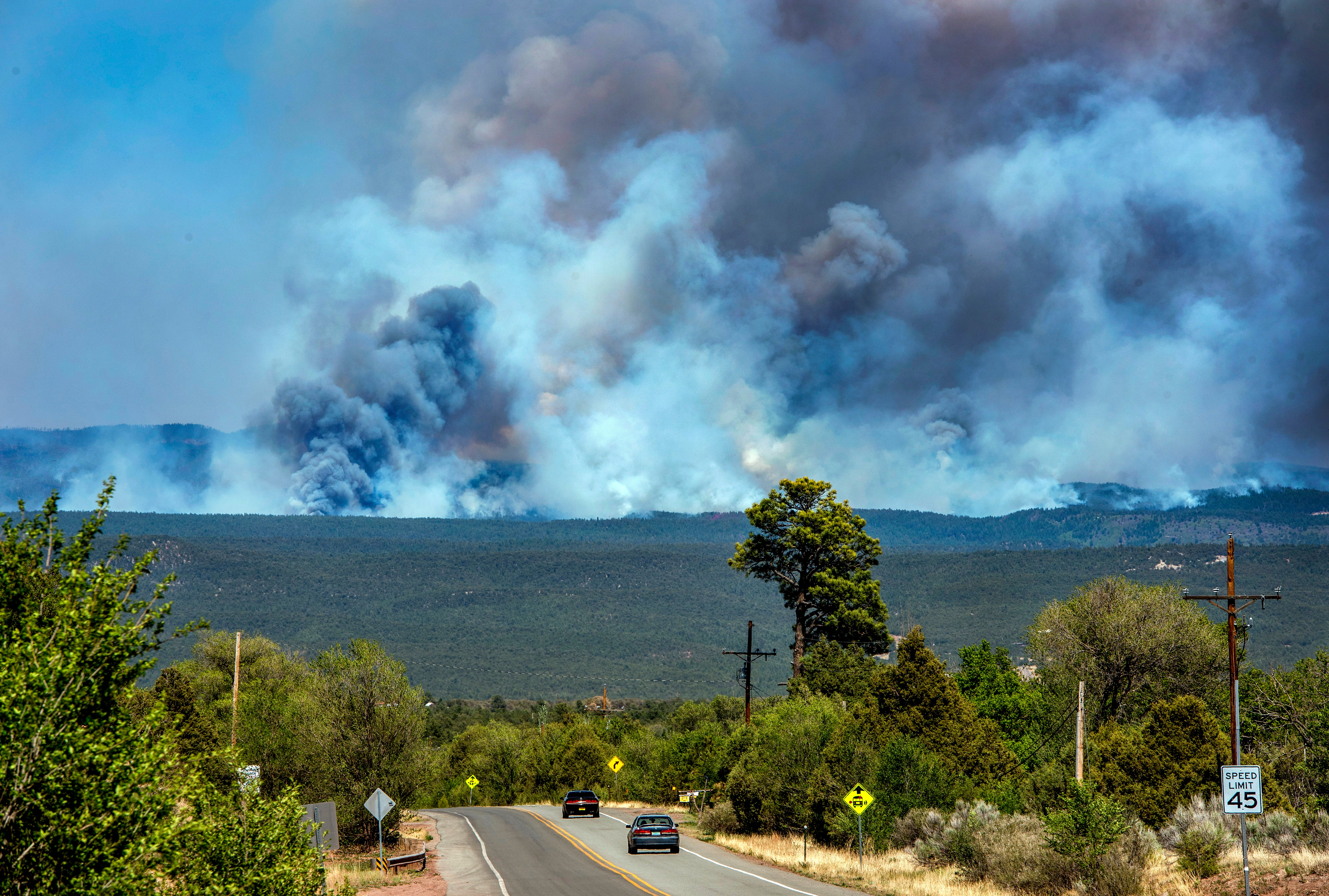US adds $103M for wildfire hazards and land rehabilitation
The U.S. is adding $103 million this year for wildfire risk reduction and burned-area rehabilitation throughout the country as well as establishing an interagency wildland firefighter well-being program

Your support helps us to tell the story
From reproductive rights to climate change to Big Tech, The Independent is on the ground when the story is developing. Whether it's investigating the financials of Elon Musk's pro-Trump PAC or producing our latest documentary, 'The A Word', which shines a light on the American women fighting for reproductive rights, we know how important it is to parse out the facts from the messaging.
At such a critical moment in US history, we need reporters on the ground. Your donation allows us to keep sending journalists to speak to both sides of the story.
The Independent is trusted by Americans across the entire political spectrum. And unlike many other quality news outlets, we choose not to lock Americans out of our reporting and analysis with paywalls. We believe quality journalism should be available to everyone, paid for by those who can afford it.
Your support makes all the difference.The U.S. is adding $103 million this year for wildfire risk reduction and burned-area rehabilitation throughout the country as well as establishing an interagency wildland firefighter health and well-being program, Interior Secretary Deb Haaland announced Friday.
Haaland made the announcement following a briefing on this year's wildfire season at the National Interagency Fire Center in Boise, which coordinates the nation's wildland firefighting efforts.
The U.S. is having one of its worst starts to the wildfire season with more than 30,000 wildfires that have scorched 4,600 square miles (12,000 square kilometers). That’s well above the 10-year average for the same period, about 23,500 wildfires and 1,800 square miles (4,700 square kilometers) burned.
About $80 million will be used to speed up work removing potential wildfire hazards on more than 3,000 square miles (7,700 square kilometers) of Interior Department lands, a 30% increase over last year. Another $20 million will be used to bolster post-wildfire landscape recovery.
The money is coming from the $1 trillion infrastructure deal President Joe Biden signed late last year.
“As wildfire seasons become longer, more intense and more dangerous, President Biden’s Bipartisan Infrastructure Law is bringing much needed support to communities across the country to increase the resilience of lands and better support federal wildland firefighters,” Haaland said.
The firefighter well-being program that includes the Forest Service will address physical and mental health needs for seasonal and year-round wildland firefighters, and will include post-traumatic stress disorder care. The fire center in recent years has started making efforts to encourage firefighters to seek mental health help after an increase in wildland firefighter suicides.
“Wildland firefighters work in incredibly stressful environments that can take a significant toll on their overall health and well-being, as well as on those who love them," Haaland said. "Standing up a targeted interagency effort to provide trauma-informed mental health care is critical.”
The Interior Department's program will establish year-round prevention and mental-health training for wildland firefighters. The Interior Department's Office of Wildland Fire will help create a new system for trauma support services that emphasizes early intervention.
About $3 million will be used for climate-related research that includes landscape resiliency, prescribed fire, carbon storage and greenhouse gas and smoke emissions.
Some of the money will be used to continue developing a wildfire risk mapping and mitigation tool that's being developed by the Forest Service and the National Association of State Foresters. That tool could help identify high-risk areas and make them a priority for treatment.
Wildfire seasons have become increasingly longer as climate change has made the West much warmer and drier in the past 30 years, and scientists have long warned that the weather will get wilder as the world warms.